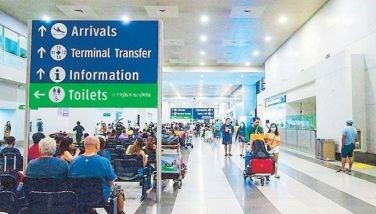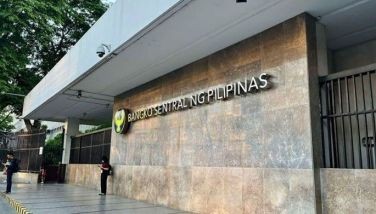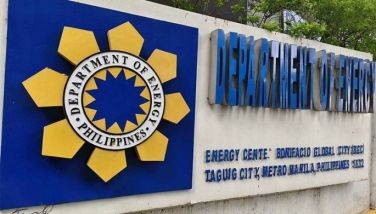River dredger

Over the last three years, San Miguel Corporation has spent P3 billion to dredge rivers to prevent flooding. It is not San Miguel’s job to do this, but Ramon S. Ang figures that if the rivers do not get dredged quickly enough, San Miguel’s businesses are adversely affected by flooding.
San Miguel started to acquire equipment for dredging in response to the perennial problem of flooding at its Polo, Valenzuela brewery plant. The problem was with the Tullahan River, which was heavily silted and full of garbage, compromising Tullahan’s carrying capacity for flood waters.
They can’t afford the annual flooding of their brewery. So, RSA decided to spend a billion pesos to dredge Tullahan. Dredging is simply the removal of sediments or debris from waterways to increase their flood carrying capacity and flow.
The Tullahan River cleanup project, which started in 2020, was completed in 2022. SMC’s cleanup teams extracted 1.12 million tons of wastes for the more than two-year run of the project. The project was able to deepen and widen the river to increase its water holding capacity to reduce severe flooding.
Next came the cleanup of the San Juan River, which San Miguel undertook when it was building the Stage 3 of the expressway project connecting SLEX to NLEX. Due to right of way problems, they had to use part of the river, but they needed to clean it up and to regularly clean it up thereafter. Due to the cleanup, areas that flooded easily along Araneta Avenue in Quezon City didn’t flood anymore.
Then, there is the P2 billion Pasig River cleanup, a challenge taken up so many times before with little success until now. SMC is expecting to extract some three million metric tons of solid waste in the Pasig River to allow it to channel flood waters more efficiently. Also undertaken was SMC’s coastal cleanup efforts in Tanza, Navotas City.
The P3 billion so far spent by San Miguel on river dredging seems to be producing more visible results more quickly than the hundreds of billions being spent by DPWH on their annual flood prevention projects.
According to the Budget department, they have allotted more than P255 billion for flood prevention projects for 2024. That brings up a total of P1.052 trillion in pork-laden flood control projects in eight years.
If you are looking for pork barrel funds inserted in the national budget, flood control projects are a favorite of politicians. Not long ago, some P385 million went to a Bicol town that state engineers said never floods. During the height of the pandemic, flood control projects got more money than DOH.
Sen. Grace Poe asked: “Why is the funding for the flood control projects of DPWH bigger than the entire budget of DOH? I just want to clarify that the fund of DOH is P131.22 billion, but the fund of DPWH for flood control projects is at least P150 billion.” In 2022, P283 billion was allocated for flood control infrastructures.
Corruption is why we still have devastating floods, specially in Central Luzon, despite large budgets. But it is easy and not too costly to do an honest job of flood control.
During the height of the flood in Pampanga two weeks ago, RSA boarded a helicopter to see for himself what was causing it. According to him, he noticed that water was being held up before the Tulaoc bridge, but water was flowing smoothly after the bridge. There is obviously some obstruction in the river, he said.
RSA surmised that the DPWH contractor created an artificial island in the river for their heavy equipment during construction or dredging. But they forgot to clean up when they were done. The solution, he said, is simply to dredge that part of the river to remove the obstruction. He offered to do it for free even if it is not his responsibility.
No, RSA said, there is no need to raise the bridge or raise the NLEX. Simple dredging will solve the problem.
RSA wanted to prove his airport project in Bulacan has nothing to do with the recent flooding. It is to his company’s interest to make sure those floods do not happen, specially in the vicinity of the airport. That is why part of the airport project is a flood management plan. SMC commenced cleanup initiatives for Meycauyan river in October 2022, followed by Maycapiz/Taliptip river last March.
So far, SMC has removed 540,000 metric tons of silt and waste, or 40 percent of the target volume, covering 4.4 kms of the 13 kms initial length around the airport site perimeter. SMC expects to complete the cleanup and dredging of the surrounding rivers of the new airport site by Feb next year.
In a meeting with the governors of Bulacan and Pampanga I attended, RSA committed to invest time and resources to clean up waterways outside of the airport perimeter and further upstream of Meycauyan and Taliptip rivers and its main tributaries. This will finally address the long-standing problem of flooding in Meycauyan, Marilao, Bocaue and Guiguinto.
San Miguel will also include in its river cleanup project other waterways outside of the airport site’s river network. This includes rivers in the northern part of Bulacan, where tributaries from northern towns of Bulacan, such as Calumpit, Malolos, Hagonoy, and Paombong discharge waters. These are also linked to the rivers in Pampanga and Nueva Ecija, and are more at risk whenever waters in dams are released due to prolonged heavy rains.
Dredging rivers and the shorelines of our seas will help give some relief from flooding problems, but we need longer term solutions. We know that the floods we experience are exacerbated by human failures. With climate change causing heavier rainfall than usual, we need to shape up.
We need to fix our inadequate drainage systems, deforestation, urbanization, and improper land use planning. To prevent future floods, a comprehensive approach is required. And we need early warning systems to provide timely alerts to communities at risk.
Mr. Ang has shown us dealing with flooding doesn’t cost as much as the pork-laden DPWH budgets suggest.
Boo Chanco’s email address is bchanco@gmail.com .Follow him on Twitter @boochanco
- Latest
- Trending




























